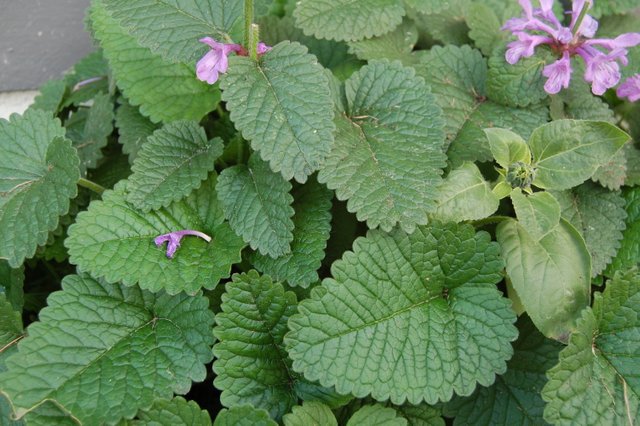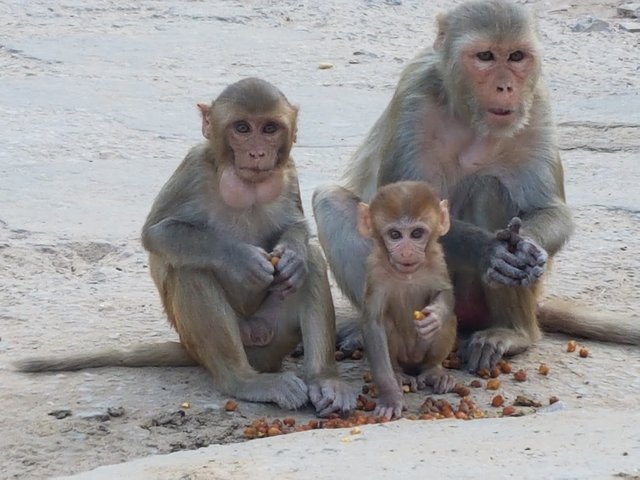Nature Identification Thread #15- Now Paying out Steem Basic Income Memberships to Participants!
It's time for the weekly nature identification thread! Post pictures of plants, animals, rocks, or other cool stuff that you've photographed but can't identify, and I, along with anyone else who would like to help, will try and help you identify it. I'll be making some changes to it- most notably, I'll be using the SBD proceeds from this post to give out @steembasicincome memberships to people who post stuff to be identified or help me identify photos.

The Southern leopard frog, Lithobates sphenocephalus. The fourteen Lithobates species are one of the most common frogs seen in North America and Europe. They're known for their spots and distinctive shapes. Some species, like the Northern leopard frog, make excellent pets. Leopard frogs were all over the little farm I grew up on. [Image source]
Remember: The most important information you can give along with any photo to be identified is its geographical location. This narrows down the range of possibilities more than any other info you can provide.
Plants:
Along with the photo, add where you found it, the time of year, the approximate altitude, and any interesting scents or textures not caught in the photo.
Animals:
Along with the photo, add the location you found it, the time of year, the sounds it made, any interesting behaviors, and any other features not caught well in the photo.
Rocks:
Along with the photo, add the location you found it, a description of the terrain it was found in, whether it was attached to a rock outcrop or found loose on the ground or buried in the soil, a description of its texture (especially its grain size), and a description of its weight and density. Fossils are included in this category.
Fungi:
I will not be identifying mushrooms and fungi for foraging. Mushrooms should really only be identified for foraging purposes in person and by an expert. If another contributor wishes to identify them, that's their call, but I encourage them to be similarly cautious. I might also try to identify a few fungi that are clearly not being looked at for the purposes of eating, but that'll be a case by case decision.
@motordrive & @klippengeist earned @steembasicincome memberships for submitting to the last nature identification thread or helping identify submissions. Congratulations! Since we only had two entrants, I also purchased memberships for @geopolis & @steemstem!
Bibliography:

Any idea about this plant? It's found in a garden bed, so it could be pretty much anything.
Leafs:

Bottom one (of your two photos) looks like Mint! Tea anyone... well the serrated leaves that is...
Ps. two of the mint family photos on this webpage look ok:
https://www.wildflowers-and-weeds.com/Plant_Families/Lamiaceae.htm
Monarda fistulosa. Horsemint or Wild Bergamont.
Irrespective it seems like the mint family. Does it smell like mint (the leaves that is)?
You are definitely onto something! After searching a bit based on the plants that looked most like it on the website you linked to, I now believe that it might be a Stachys macrantha. This looks very much like it, and it's apparently a pretty common garden plant. I can smell it tomorrow to help determine, because S. macrantha does apparently have a terrible fragrance.
Awesome! Good research on your end too! S. macrantha could work. I look forward to hearing how the smell test goes! Exciting.
Thanks. The smelling test went pretty bad; my nose is not able to pick up any distinct smell. But it might be because I have a pretty bad sense of smell in general :P
Hahaha. Don't know but thanks for checking. No smell perhaps means it is not mint as mint is usually very powerful. But you never know! Thanks for checking....
I don't think it's mint; the flowers look a bit different. The leaves are a lot like them though.
Is this a petrified stump? (Southern Illinois)
I made a post with a bunch of pictures/info and somebody suggested I ask here. Thanks!
https://steemit.com/geology/@soill/is-this-a-petrified-tree-stump
Hey, I think it is too. Concentric rings, etc. Cool!
PS. There is lots of parents giving away old tree stumps going around here I feel (in a slightly jealous way). Check out the posting by @shasta for more fossil wood. @shasta 's was likely a redwood. Perhaps yours is also from California @soill?
Wow petrified stumps are coming outta the woodwork lately! lol
That is a really cool one @soill's has! I noticed some red colouring
on the bottom of theirs. Makes me think of the red of Arizona stones.
Thanks for the mention @snowyknight! :-)
''in a slightly jealous way'' maybe a steemit
rock exchange day is in order? 💎
My guess is that yes, it is, but some more info could help. Did your parents tell you where they got it from? If it's from coal country, for instance, the answer is almost certainly yes.
My dad said it was handed down to him and he's not really sure where it came from. He seemed to barely remember how he got it. Yet, he grew up here in Southern Illinois, near Du Bois, Illinois, and this area has a long history of coal mining. The Illinois State Geological Survey maps show the whole area is pretty well covered in underground coal mines, including Du Bois specifically. I wanted to keep some objective skepticism though, as nearby is also Giant City State Park, which is known for some pretty amazing concretion rock formations.
I'd definitely bet on it being a fossilized tree trunk segment- it looks way more like that than it does a concretion, and fossilized trees are a dime a dozen in a lot of coal deposits. (They're known as kettle bottoms, and pose a serious hazard to miners- when exposed in the ceiling, they're prone to slipping out of the rock and crushing whatever is below.)
I support this interpretation.
Cool background on your photos and post!
Thanks for doing this again!
This is a rabbit I saw north of Seattle, Whidbey Island area a few weeks ago. Actually, I saw about 5 of these guys hopping around Langley but they have a distinct yellowish fur on the body with black fur under the mouth, wondering what they're called as they seem pretty unique.
It's almost certainly some variety of domesticated rabbit that escaped and became established in the area. It doesn't look like any of the two native species or the other invasive species, and it's definitely not a hare (jackrabbit).
I have got two pictures for you!
took them both in India In OCT 2017


i
i would really like to know whats the different types of the monkeys
Nice idea I like it will have to remember to dig some shots out for you 💯🐒
Cool, looking forward to them!
We have a lakes in Ukraine, which are full of these creatures! It is interesting feeling: to see such familiar amphibious in your identification thread!
They're present all across Europe and America, so seems likely they're the same!
We have a lakes in Ukraine, which are full of these creatures! It is interesting feeling: to see such familiar amphibious in your identification thread!